Ballona Discovery Park
13110 Bluff Creek Dr.
Los Angeles, CA 90094


Established:
2011
Size:
2 acres
Features:
So much information
Gabrielino Tongva History
Kiiy replica
Medicinal plants
Picnic Tables
Best Time to visit:
All year
This garden shines all year round. Spring has the wildflowers, summer has the buckwheats in bloom. Fall the goldenbush bloom and the cottonwood’s have beautiful fall foliage. In winter the toyons are covered in red berries. There is not a lot of shade in the garden but its proximity to the ocean means that it is cool even on the hottest day.
The Ballona Discovery Center is the gateway to the wetlands. The Friends of the Ballona Wetlands describe it as a museum without walls and it is packed full of information. Here one can learn about the history of the wetlands, their creation (they are man-made as there was nothing left of the habitat to preserve), the Tongva, how they lived, their culture and one can even listen to examples of their language and listen to a Tongva story inside a recreation of a kiiy.
There is a section that is devoted to Tongvian medicinal plants and helpful information plaques give the names and uses of these plants. The watershed walk takes you through each habitat in California, from the mountains to the sea. The wetlands are part of the same water system that visitors can see in other parks like Eaton Canyon, Deb’s Park and any of the parks along the LA River. Interestingly Ballona creek was once the mouth of the LA River instead of Long Beach. The goal of the park is to connect visitors to our water system and to the complex and important role that the wetlands play in the greater ecosystem.
There is a section that is devoted to Tongvian medicinal plants and helpful information plaques give the names and uses of these plants. The watershed walk takes you through each habitat in California, from the mountains to the sea. The wetlands are part of the same water system that visitors can see in other parks like Eaton Canyon, Deb’s Park and any of the parks along the LA River. Interestingly Ballona creek was once the mouth of the LA River instead of Long Beach. The goal of the park is to connect visitors to our water system and to the complex and important role that the wetlands play in the greater ecosystem.
Trails crisscross through the Discovery Center and connect the Ballona Riparian Corridor. The Friends of the Ballona Wetlands call it a “Responsible Recreation” and was created as a settlement between the developers and the organization. The developers agreed to restore and sustain the corridor, and the Freshwater Marsh that it feeds. This area supports many rare and sensitive species of birds. Tree Swallows, Least Bell’s Vireo, Yellow Warbler are all found in this area and dependent on the small remnant of habitat. There is a four mile long walking trail that runs in a loop around the corridor that can be accessed through the Discovery Park.
“The goal of the park is to connect visitors to our water system and to the complex and important role that the wetlands play in the greater ecosystem.”
Here visitors can see large mature toyons, mule fat, coyote bush and sage. Trails crisscross through the Discovery Center and connect with the long walking trail that runs the length of Bluff Creek Drive. There are picnic tables and benches scattered along the trails. Thoughtful planting creates year-round interest; there is always something blooming and something new to learn.
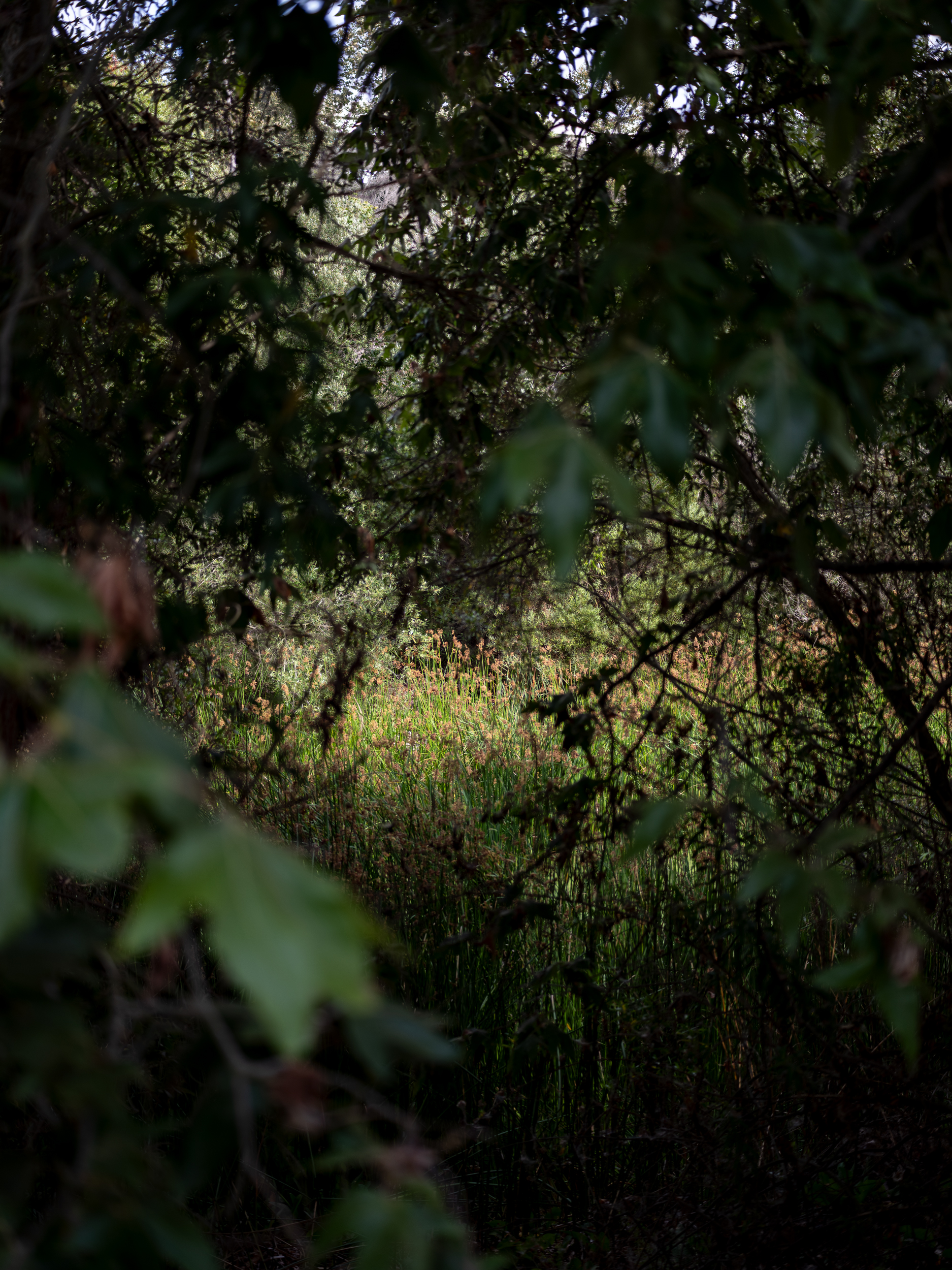
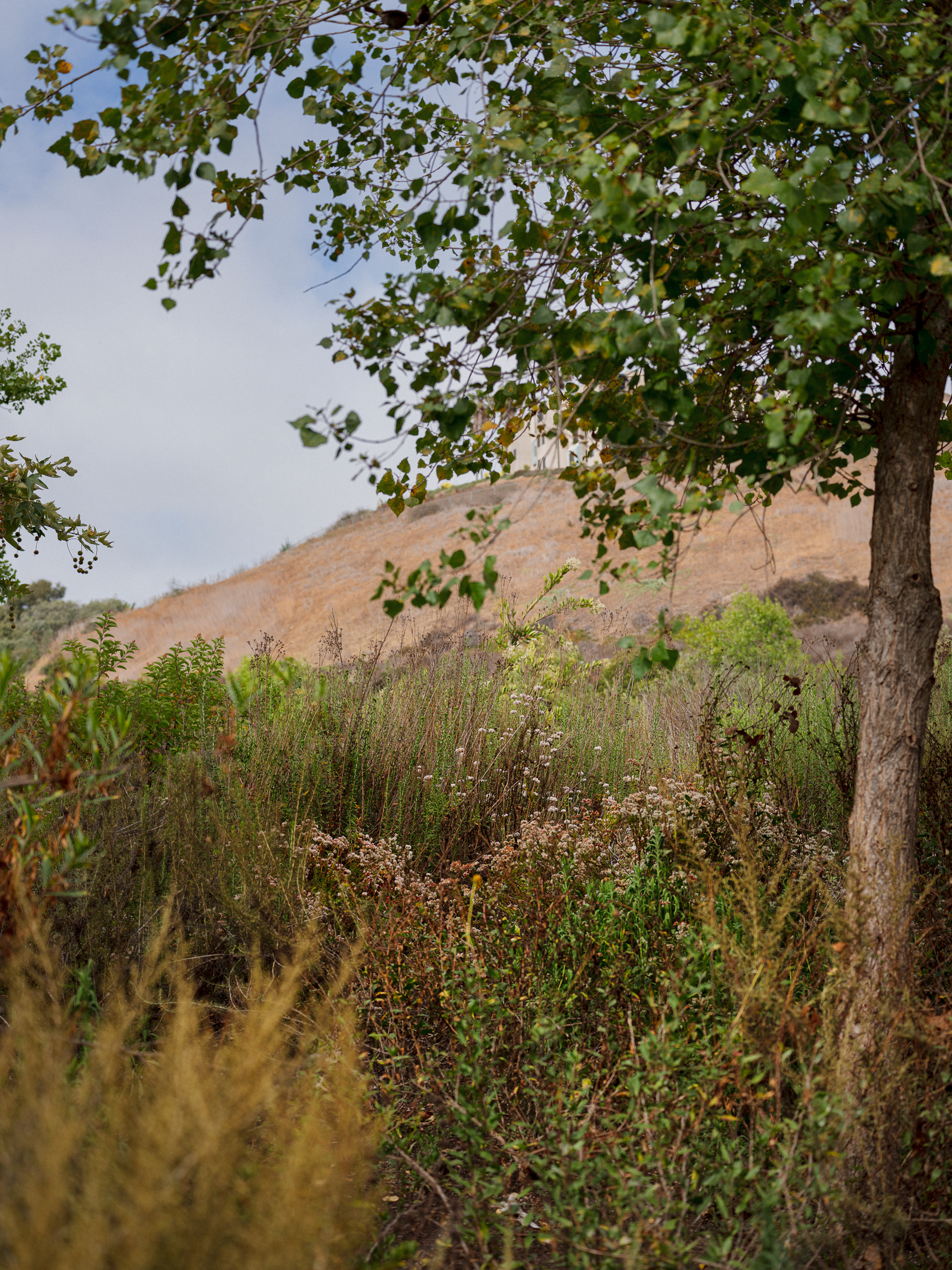
The Ballona Wetlands are the product of decades long community activism. After over a century of abuse and degradation, the 1960’s saw the destruction of 900 acres of wetlands, for the construction of Marina Del Rey and devastated the ecology of the region. In 1976, Howard Hughes, who owned the remaining wetlands, died and his heirs planned to develop the land. In response, the Friends of the Ballona Wetlands was formed.
Finally, in 2003, the wetlands were purchased by the State of California and made an official reserve. Since then, extensive restoration of the wetlands has taken place with more projects planned for the future. It is important to say again, what was written above, that the Ballona Wetlands are man made. What was left when the state finally purchased the land was a degraded and damaged, small fraction of what the wetlands once were. Several endangered species live in the wetlands, the California least tern, Belding’s savannah sparrow, and the El Segundo blue butterfly. The protected area covers almost 600 acres and is permanently protected from development. It is managed by the California Department of Fish and Game.
In 2007 during the construction of Playa Vista, the remains of a cemetery from the Tongva-Gabrielino village of Guashna was uncovered.
Finally, in 2003, the wetlands were purchased by the State of California and made an official reserve. Since then, extensive restoration of the wetlands has taken place with more projects planned for the future. It is important to say again, what was written above, that the Ballona Wetlands are man made. What was left when the state finally purchased the land was a degraded and damaged, small fraction of what the wetlands once were. Several endangered species live in the wetlands, the California least tern, Belding’s savannah sparrow, and the El Segundo blue butterfly. The protected area covers almost 600 acres and is permanently protected from development. It is managed by the California Department of Fish and Game.
In 2007 during the construction of Playa Vista, the remains of a cemetery from the Tongva-Gabrielino village of Guashna was uncovered.
This was not a surprise, or should not have been a surprise according to Professor Cindy Alvitre from Cal-State Long Beach. “They knew the cemetery was there, but they weren’t quite sure exactly where.” There were an estimated 250,000 Tongva people
“It is important to say again, what was written above, that the Ballona Wetlands are man made. What was left when the state finally purchased the land was a degraded and damaged, small fraction of what the wetlands once were.”
living in the LA Basin and surrounding area for approximately 10,00 years. Guashna was a large village that underneath what is now Playa Vista. What was uncovered was one of the largest burial grounds ever found in California, and of course it was the center of tension and controversy.
The remains were excavated by archaeologists. The remains were laid to rest in the Ballona Discovery Park, which is not far from where they were uncovered. In July of 2021 a monument for honoring the ancestors that were reentered was placed in the park, not far from the burial place.

More Information
Opening Hours:
From dusk to dawn everyday

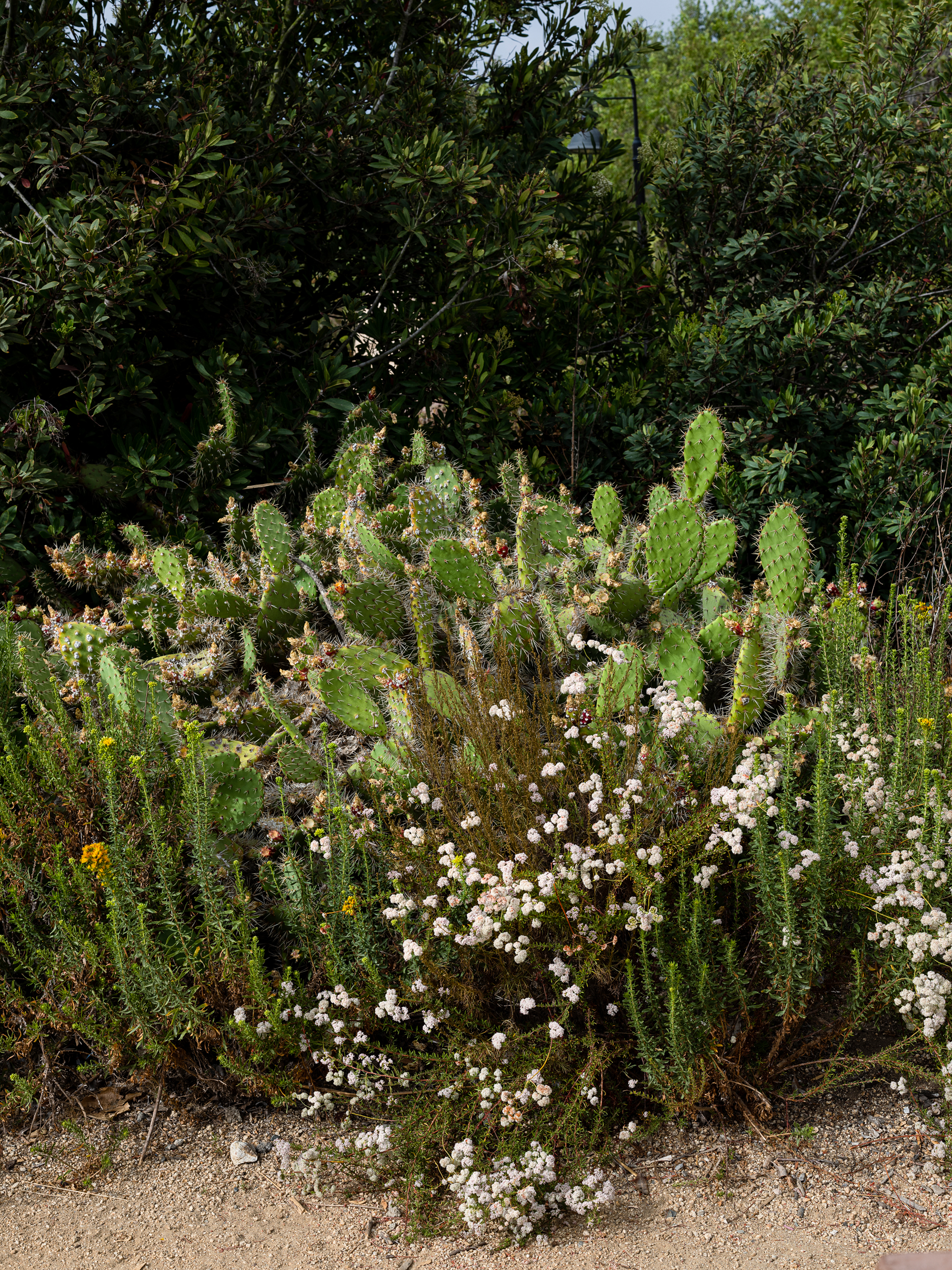

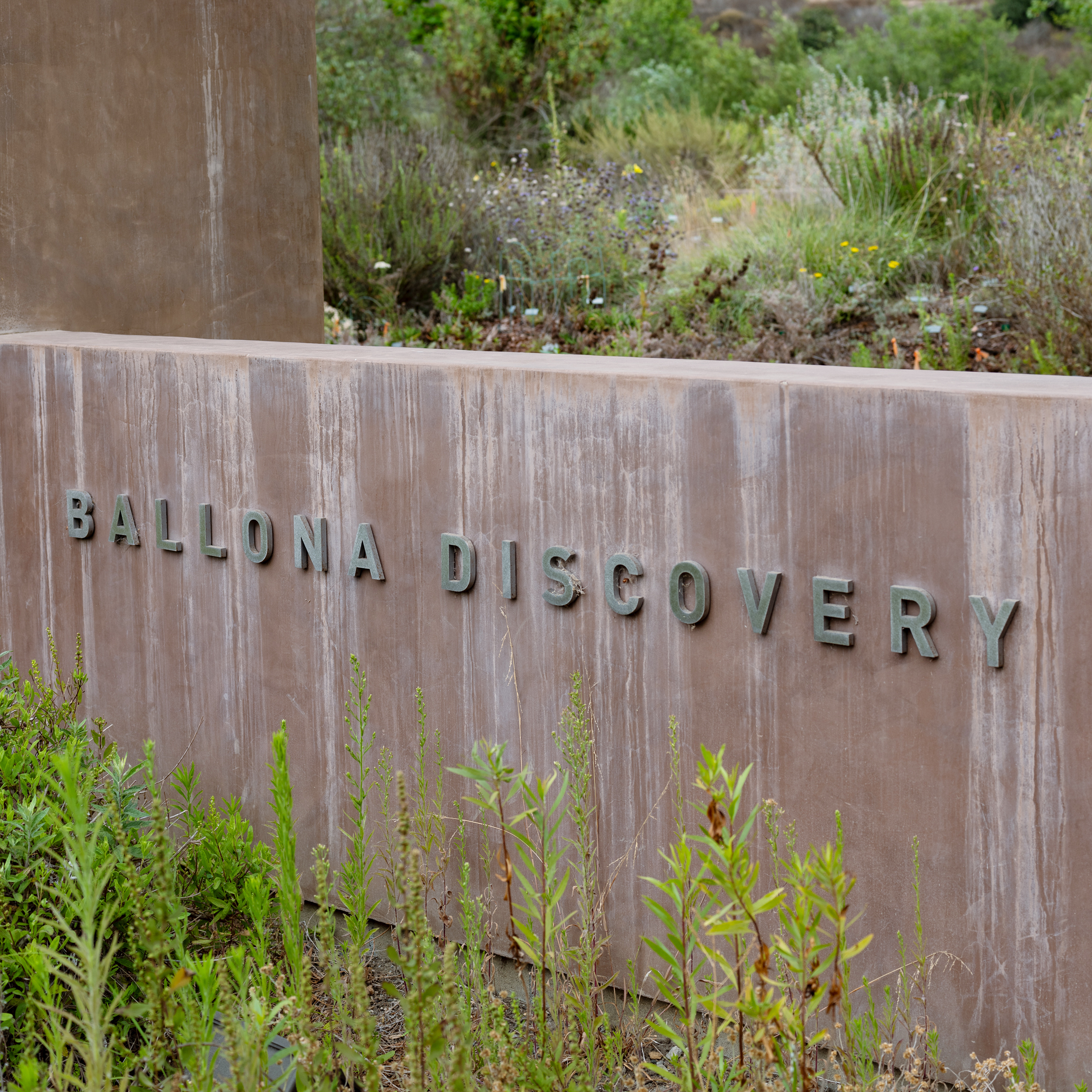
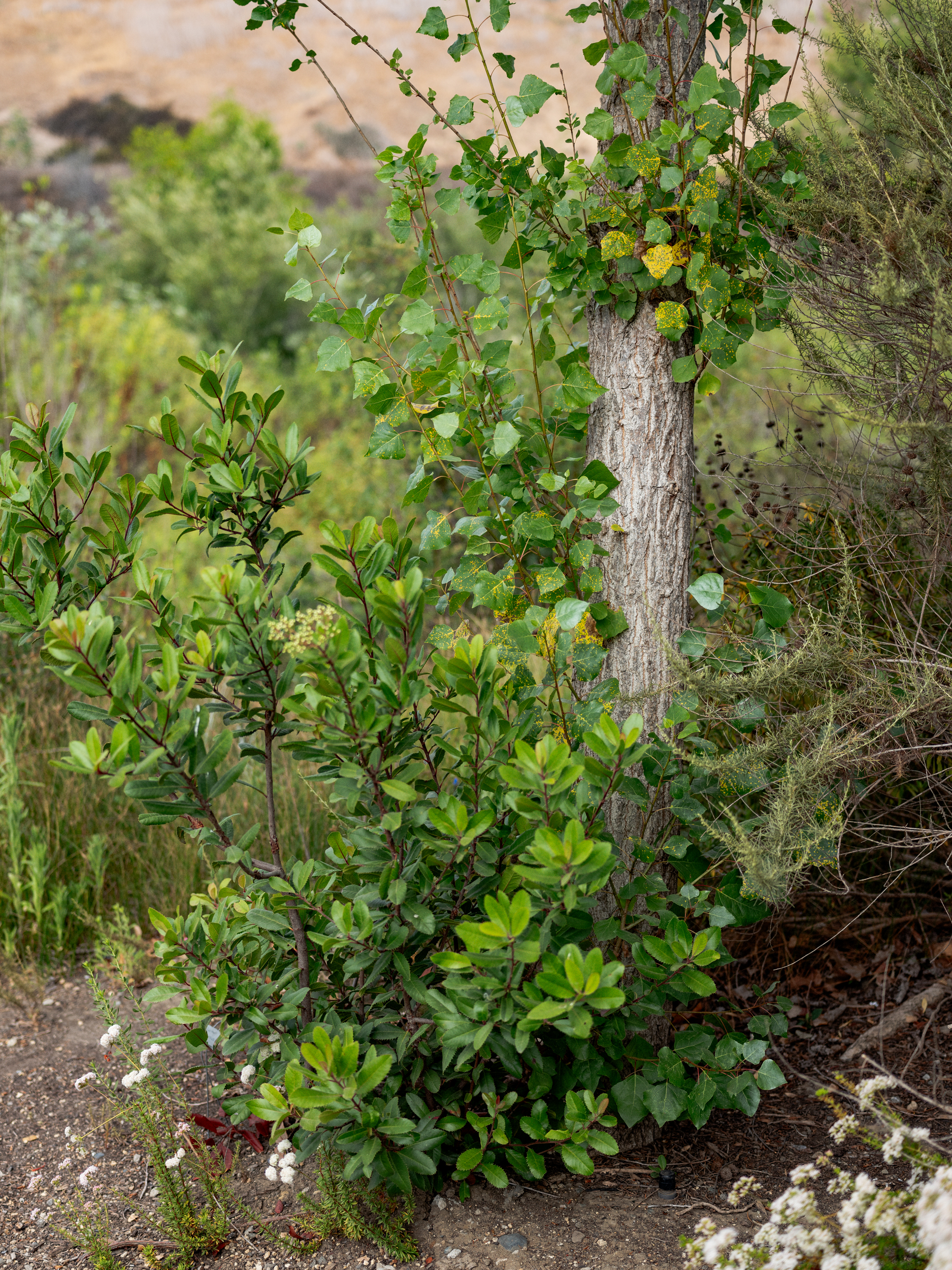


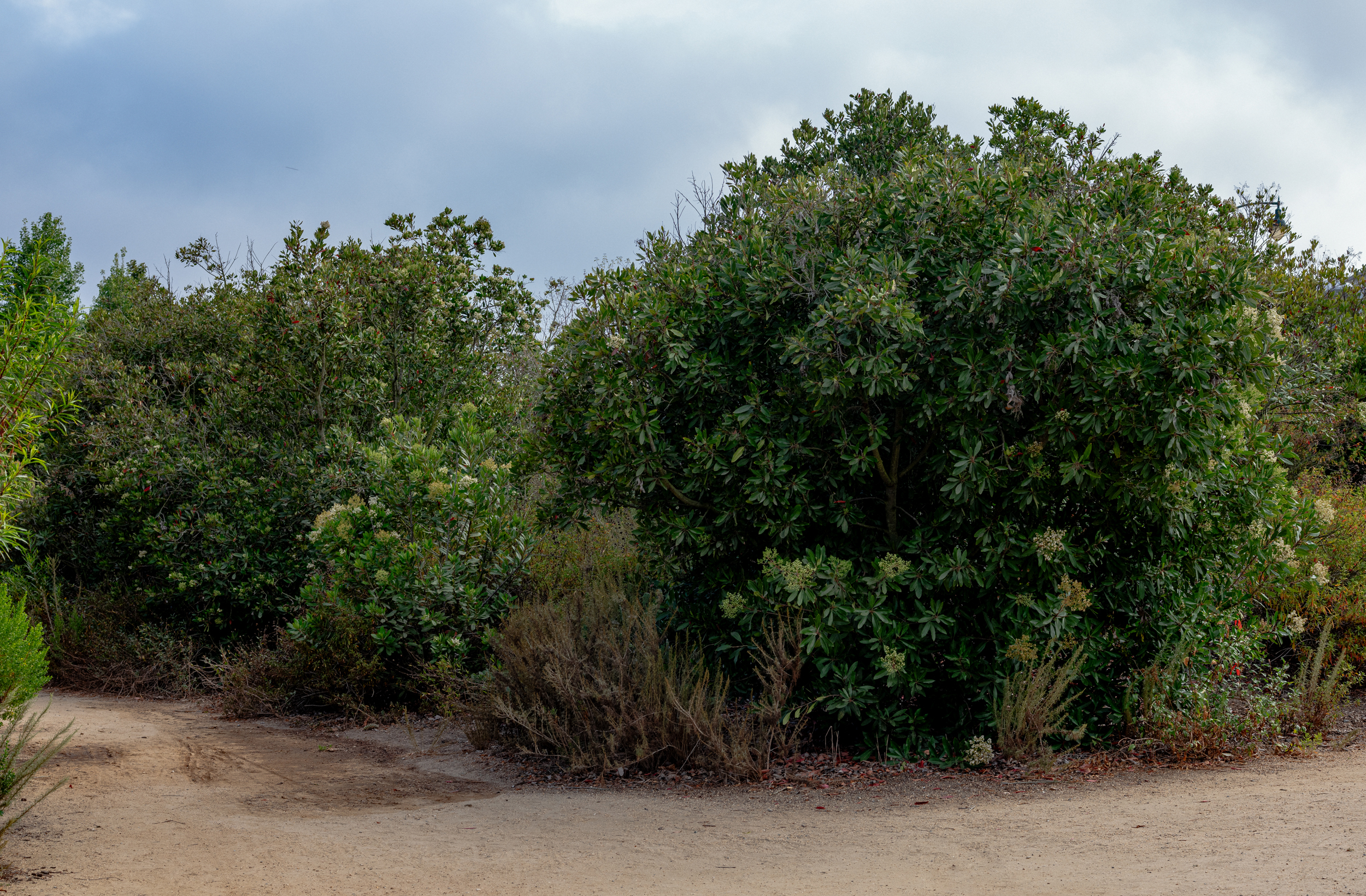








Ballona Discovery Park
13110 Bluff Creek Dr.
Los Angeles, CA 90094


Established:
2011
Size:
2 acres
Features:
So much information
Gabrielino Tongva History
Kiiy replica
Medicinal plants
Picnic Tables
Best Time to visit:
All year
This garden shines all year round. Spring has the wildflowers, summer has the buckwheats in bloom. Fall the goldenbush bloom and the cottonwood’s have beautiful fall foliage. In winter the toyons are covered in red berries. There is not a lot of shade in the garden but its proximity to the ocean means that it is cool even on the hottest day.
The Ballona Discovery Center is the gateway to the wetlands. The Friends of the Ballona Wetlands describe it as a museum without walls and it is packed full of information. Here one can learn about the history of the wetlands, their creation (they are man-made as there was nothing left of the habitat to preserve), the Tongva, how they lived, their culture and one can even listen to examples of their language and listen to a Tongva story inside a recreation of a kiiy.
There is a section that is devoted to Tongvian medicinal plants and helpful information plaques give the names and uses of these plants. The watershed walk takes you through each habitat in California, from the mountains to the sea. The wetlands are part of the same water system that visitors can see in other parks like Eaton Canyon, Deb’s Park and any of the parks along the LA River. Interestingly Ballona creek was once the mouth of the LA River instead of Long Beach. The goal of the park is to connect visitors to our water system and to the complex and important role that the wetlands play in the greater ecosystem.
There is a section that is devoted to Tongvian medicinal plants and helpful information plaques give the names and uses of these plants. The watershed walk takes you through each habitat in California, from the mountains to the sea. The wetlands are part of the same water system that visitors can see in other parks like Eaton Canyon, Deb’s Park and any of the parks along the LA River. Interestingly Ballona creek was once the mouth of the LA River instead of Long Beach. The goal of the park is to connect visitors to our water system and to the complex and important role that the wetlands play in the greater ecosystem.
Trails crisscross through the Discovery Center and connect the Ballona Riparian Corridor. The Friends of the Ballona Wetlands call it a “Responsible Recreation” and was created as a settlement between the developers and the organization. The developers agreed to restore and sustain the corridor, and the Freshwater Marsh that it feeds. This area supports many rare and sensitive species of birds. Tree Swallows, Least Bell’s Vireo, Yellow Warbler are all found in this area and dependent on the small remnant of habitat. There is a four mile long walking trail that runs in a loop around the corridor that can be accessed through the Discovery Park.
“The goal of the park is to connect visitors to our water system and to the complex and important role that the wetlands play in the greater ecosystem.”
Here visitors can see large mature toyons, mule fat, coyote bush and sage. Trails crisscross through the Discovery Center and connect with the long walking trail that runs the length of Bluff Creek Drive. There are picnic tables and benches scattered along the trails. Thoughtful planting creates year-round interest; there is always something blooming and something new to learn.


The Ballona Wetlands are the product of decades long community activism. After over a century of abuse and degradation, the 1960’s saw the destruction of 900 acres of wetlands, for the construction of Marina Del Rey and devastated the ecology of the region. In 1976, Howard Hughes, who owned the remaining wetlands, died and his heirs planned to develop the land. In response, the Friends of the Ballona Wetlands was formed.
Finally, in 2003, the wetlands were purchased by the State of California and made an official reserve. Since then, extensive restoration of the wetlands has taken place with more projects planned for the future. It is important to say again, what was written above, that the Ballona Wetlands are man made. What was left when the state finally purchased the land was a degraded and damaged, small fraction of what the wetlands once were. Several endangered species live in the wetlands, the California least tern, Belding’s savannah sparrow, and the El Segundo blue butterfly. The protected area covers almost 600 acres and is permanently protected from development. It is managed by the California Department of Fish and Game.
Finally, in 2003, the wetlands were purchased by the State of California and made an official reserve. Since then, extensive restoration of the wetlands has taken place with more projects planned for the future. It is important to say again, what was written above, that the Ballona Wetlands are man made. What was left when the state finally purchased the land was a degraded and damaged, small fraction of what the wetlands once were. Several endangered species live in the wetlands, the California least tern, Belding’s savannah sparrow, and the El Segundo blue butterfly. The protected area covers almost 600 acres and is permanently protected from development. It is managed by the California Department of Fish and Game.
In 2007 during the construction of Playa Vista, the remains of a cemetery from the Tongva-Gabrielino village of Guashna was uncovered. This was not a surprise, or should not have been a surprise according to Professor Cindy Alvitre from Cal-State Long Beach. “They knew the cemetery was there, but they weren’t quite sure exactly where.” There were an estimated 250,000 Tongva people
“It is important to say again, what was written above, that the Ballona Wetlands are man made. What was left when the state finally purchased the land was a degraded and damaged, small fraction of what the wetlands once were.”
living in the LA Basin and surrounding area for approximately 10,00 years. Guashna was a large village that underneath what is now Playa Vista. What was uncovered was one of the largest burial grounds ever found in California, and of course it was the center of tension and controversy.
The remains were excavated by archaeologists. The remains were laid to rest in the Ballona Discovery Park, which is not far from where they were uncovered. In July of 2021 a monument for honoring the ancestors that were reentered was placed in the park, not far from the burial place.

More Information
Opening Hours:
From dusk to dawn everyday
















Ballona Discovery Park
13110 Bluff Creek Dr.
Los Angeles, CA 90094

Established:
2011
Size:
2 acres
Features:
So much information
Gabrielino Tongva History
Kiiy replica
Medicinal plants
Picnic Tables
Best Time to visit:
All Year
This garden shines all year round. Spring has the wildflowers, summer has the buckwheats in bloom. Fall the goldenbush bloom and the cottonwood’s have beautiful fall foliage. In winter the toyons are covered in red berries. There is not a lot of shade in the garden but its proximity to the ocean means that it is cool even on the hottest day.
The Ballona Discovery Center is the gateway to the wetlands. The Friends of the Ballona Wetlands describe it as a museum without walls and it is packed full of information. Here one can learn about the history of the wetlands, their creation (they are man-made as there was nothing left of the habitat to preserve), the Tongva-Gabrielino, how they lived, their culture and one can even listen to examples of their language and listen to a Tongva story inside a recreation of a kiiy.
“The goal of the park is to connect visitors to our water system and to the complex and important role that the wetlands play in the greater ecosystem.”
There is a section that is devoted to Tongvian medicinal plants and helpful information plaques give the names and uses of these plants. The watershed walk takes you through each habitat in California, from the mountains to the sea. The wetlands are part of the same water system that visitors can see in other parks like Eaton Canyon, Deb’s Park and any of the parks along the LA River. Interestingly Ballona creek was once the mouth of the LA River instead of Long Beach. The goal of the park is to connect visitors to our water system and to the complex and important role that the wetlands play in the greater ecosystem.
“The goal of the park is to connect visitors to our water system and to the complex and important role that the wetlands play in the greater ecosystem.”
There is a section that is devoted to Tongvian medicinal plants and helpful information plaques give the names and uses of these plants. The watershed walk takes you through each habitat in California, from the mountains to the sea. The wetlands are part of the same water system that visitors can see in other parks like Eaton Canyon, Deb’s Park and any of the parks along the LA River. Interestingly Ballona creek was once the mouth of the LA River instead of Long Beach. The goal of the park is to connect visitors to our water system and to the complex and important role that the wetlands play in the greater ecosystem.

Trails crisscross through the Discovery Center and connect the Ballona Riparian Corridor. The Friends of the Ballona Wetlands call it a “Responsible Recreation” and was created as a settlement between the developers and the organization. The developers agreed to restore and sustain the corridor, and the Freshwater Marsh that it feeds. This area supports many rare and sensitive species of birds. Tree Swallows, Least Bell’s Vireo, Yellow Warbler are all found in this area and dependent on the small remnant of habitat.

The design of the Discovery Center is beautiful. Smooth rich brown walls and hardscaping at the entrance to the garden give the wild meadow-like plantings structure and elegance. As you move farther into the space, the design becomes less formal and blends into a wild landscape. Here visitors can see large mature toyons, mule fat, coyote bush and sage. There are picnic tables and benches scattered along the trails. Thoughtful planting creates year-round interest; there is always something blooming and something new to learn.

The Ballona Wetlands are the product of decades long community activism. After over a century of abuse and degradation, the 1960’s saw the destruction of 900 acres of wetlands for the construction of Marina Del Rey and devastated the ecology of the region. In 1976, Howard Hughes, who owned the remaining wetlands, died and his heirs planned to develop the land. In response, the Friends of the Ballona Wetlands was formed.
Finally, in 2003, the wetlands were purchased by the State of California and made an official reserve. Since then, extensive restoration of the wetlands has taken place with more projects planned for the future. It is important to say again, what was written above, that the Ballona Wetlands are man made. What was left when the state finally purchased the land was a degraded and damaged, small fraction of what the wetlands once were. Several endangered species live in the wetlands, the California least tern, Belding’s savannah sparrow, and the El Segundo blue butterfly. The protected area covers almost 600 acres and is permanently protected from development. It is managed by the California Department of Fish and Game.
Finally, in 2003, the wetlands were purchased by the State of California and made an official reserve. Since then, extensive restoration of the wetlands has taken place with more projects planned for the future. It is important to say again, what was written above, that the Ballona Wetlands are man made. What was left when the state finally purchased the land was a degraded and damaged, small fraction of what the wetlands once were. Several endangered species live in the wetlands, the California least tern, Belding’s savannah sparrow, and the El Segundo blue butterfly. The protected area covers almost 600 acres and is permanently protected from development. It is managed by the California Department of Fish and Game.

In 2007 during the construction of Playa Vista, the remains of a cemetery from the Tongva-Gabrielino village of Guashna was uncovered. This was not a surprise, or should not have been a surprise according to Professor Cindy Alvitre from Cal-State Long Beach. “They knew the cemetery was there, but they weren’t quite sure exactly where.”
“It is important to say again, what was written above, that the Ballona Wetlands are man made. What was left when the state finally purchased the land was a degraded and damaged, small fraction of what the wetlands once were.”
There were an estimated 250,000 Tongva people living in the LA Basin and surrounding area for approximately 10,00 years. Guashna was a large village that underneath what is now Playa Vista. What was uncovered was one of the largest burial grounds ever found in California, and of course it was the center of tension and controversy. The remains were excavated by archaeologists. The remains were laid to rest in the Ballona Discovery Park, which is not far from where they were uncovered. In July of 2021 a monument for honoring the ancestors that were reentered was placed in the park, not far from the burial place.

More Information
Opening Hours:
From dusk to dawn everyday














